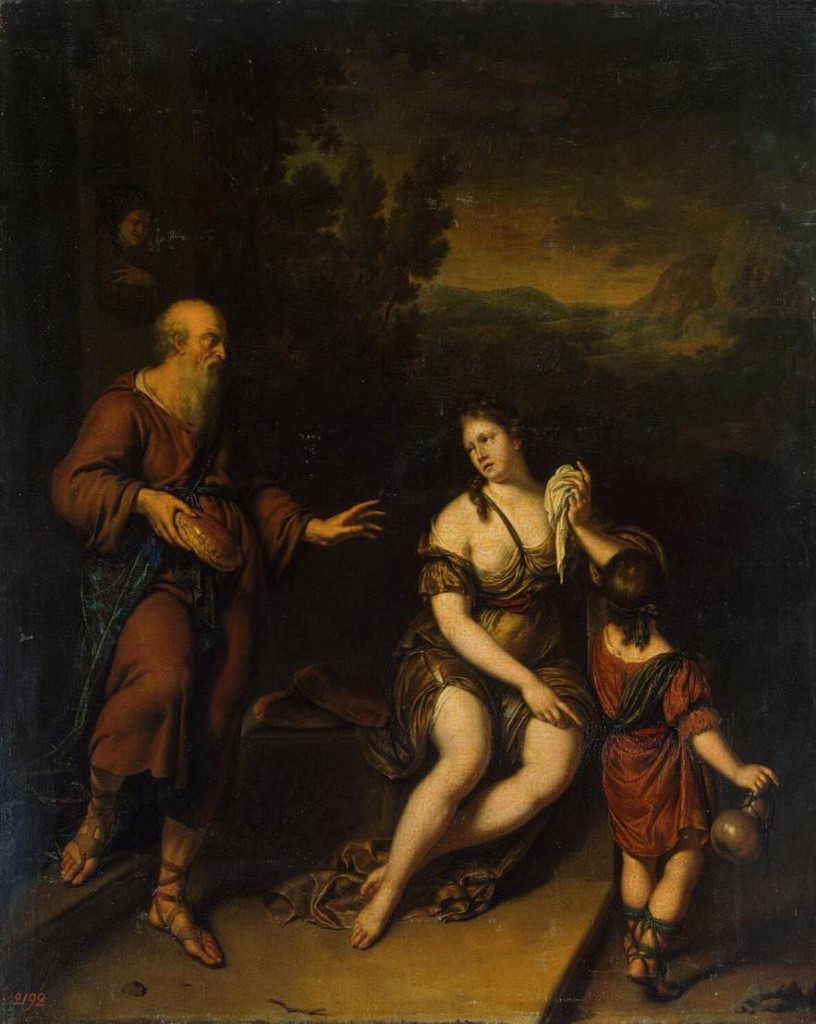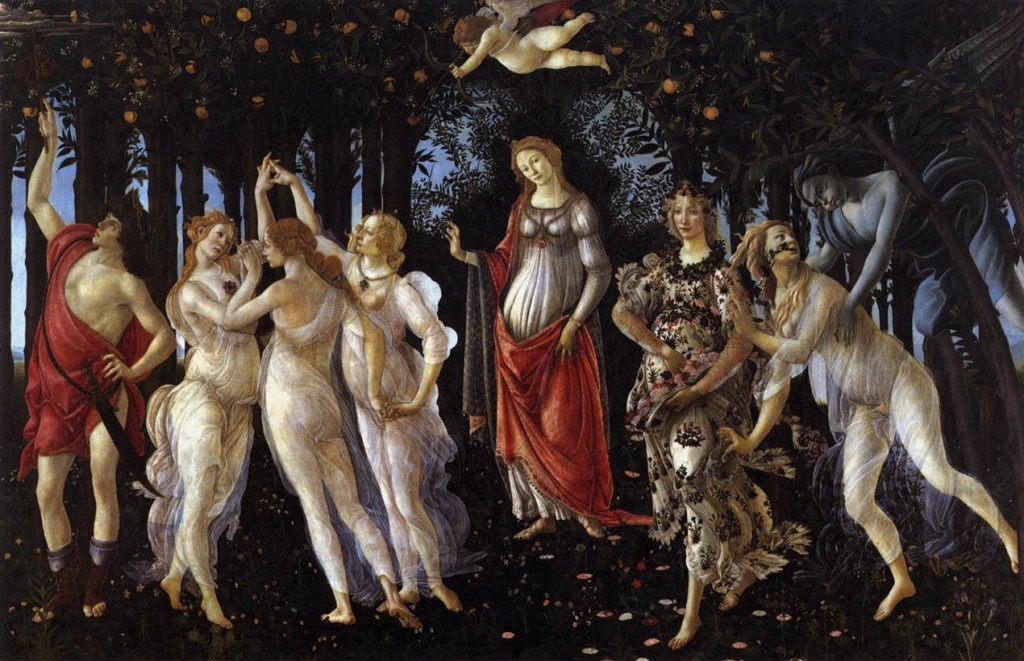All comedy aspires to laughter, although not all laughter is related to comedy. Still, many essential aspectsof comedy find affirmation in this response. To begin with, as Aristotle long ago observed, laughter is a uniquely human prerogative. Even that staid and serious Roman scholar Pliny justified his occasional reading of comedy, saying “aliquando praeterea rideo…homo sum.” “Indeed, I laugh now and then. After all, I’m human.” Psychologically, laughter signals the triumph of instinct over intellect. Suzanne Langer once said, “the crest of a wave of felt vitality.” And laughter is universally recognized as a social gesture, one that binds the community and integrates the society.

—MIERIS, Willem van
(b. 1662, Leiden, d. 1747, Leiden)—Expulsion of Hagar
1724
Oil on canvas mounted on panel, 44 x 34 cm
The Hermitage, St. Petersburg—Read More:http://www.wga.hu/frames-e.html?/html/m/mieris/willem/exphagar.html
Legends of many cultures link laughter and fertility. In one Greco-Egyptian myth the beginning was not the Word, but the Laugh- and the Laugh was God. According to Apache legend, when the first man awakened to discover the first woman beside him, he spoke. Then she spoke. He laughed. Then she laughed. And as they went off together, the world burst into springtime and song. Theirs was a laughter of eros that set the world in bloom, as in the Homeric hymn to Demeter depicting a spring so intense that “The entire earth and all the salty sea laughed for joy.”
Moreover, when Demeter loses Persephone, she not only refuses food and drink, but she is unlaughing. Then the earth starves, the flowers wilt, the fields are barren. The world is winter until mother and daughter are joyfully reunited.

—WERFF, Adriaen van der
(b. 1659, Kralingen, d. 1722, Rotterdam)—Sarah Presenting Hagar to Abraham
1699
Oil on canvas, 76,3 x 61 cm
Staatsgalerie, Schleissheim—Read More:http://www.wga.hu/frames-e.html?/html/w/werff/adriaen/sarah.html
Here on a cosmic level, we can see the same association between fertility and laughter evident in the Biblical tale of Sarah, who thus responded when told she would conceive at the age of ninety. Hence, it is understandable that apotropaic or mimetic fertility rites in widely diverse cultures feature laughter. And observers have been quick to note that ritual laughter expresses not merely the life-force but rebirth as well. This may even be seen in the famous Easter Laughter of the Greek Orthodox Church, which welcomes the resurrection of Christ.

—Proserpin. Milton refers to the stories of Proserpina in Ovid’s Metamorphosis 5 and the Homeric Hymn to Demeter. Proserpina, daughter of Zeus and Ceres, is carried away by Dis (Pluto) while gathering flowers in Enna, Sicily. Ceres, the goddess of corn, prevented any crops from growing while she searched for her daughter. Finally, Dis agreed to return Proserpina to her mother for six months each year. Thus, the crops only grow for half a year. These might be called negative similes, since each comparison is evoked by “Not” or “nor.”—Read More:http://www.dartmouth.edu/~milton/reading_room/pl/book_4/notes.shtml







 COMMENTS
COMMENTS



